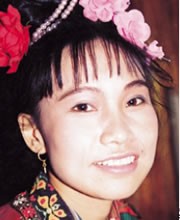The Cai, who are also known as the Caijia, have never been included as part of any official nationality by the Chinese authorities. In the 1982 census they were placed in a list of Undetermined Minorities. The Cai were just one of 80 groups in Guizhou on this list which totaled more than 900,000 people. In 1985 many of these groups were assigned into existing nationalities, but scholars remained baffled by the complexity of the Cai. They remain an unclassified group, although the authorities believe them to be related to the Miao. The Cai consider themselves distinct from all other ethnic groups in the region and strongly insist on being granted their own minority status.
During the Ming Dynasty (1368-1644), when the Cai were a stronger and much larger group than today, they appeared in historical accounts as the Song Ren. They are believed to have fragmented into smaller groups over the past 300 years. Today, the Lu ethnic group is ethnoculturally close to the Cai. The Cai intermarry with the Lu and consider them to have once been related.
The Cai used to wear clothes made of fur. This can still be seen in some of the more remote Cai villages today. Many Cai are employed as shepherds and goatherds. A sizable number also work in the carpet-making industry.
Most Cai worship many gods and spirits, although in recent decades an increasing Christian presence has also emerged among them. The polytheistic Cai blow leaves to worship spirits. When a Cai person dies, the people attending the funeral are not permitted to cry or show any remorse. Instead, they walk around the corpse and sing.
Most Cai Christians heard the gospel from Yi and Miao evangelists who were sent to reach out to them. The northwest Guizhou region was first focused on by missionaries in the late 1800s. A mass people movement to Christ occurred in the early 1900s, especially among the AHmao (Big Flowery Miao).
Today, there are numerous Christian communities in Dafang County, but believers live in dire poverty and have few Bibles.
Pray for a community-changing revival to move in Cai churches, giving them to desire to be Christ-bearers to their unreached neighbors.
Pray for God s protection and goodness to permeate Cai families.
Pray for the Holy Spirit to move in Cai churches, leading them to discipleship.
Scripture Prayers for the Cai in China.
Operation China, Asia Harvest, Copyrighted Used with permission.
| Profile Source: Joshua Project |










